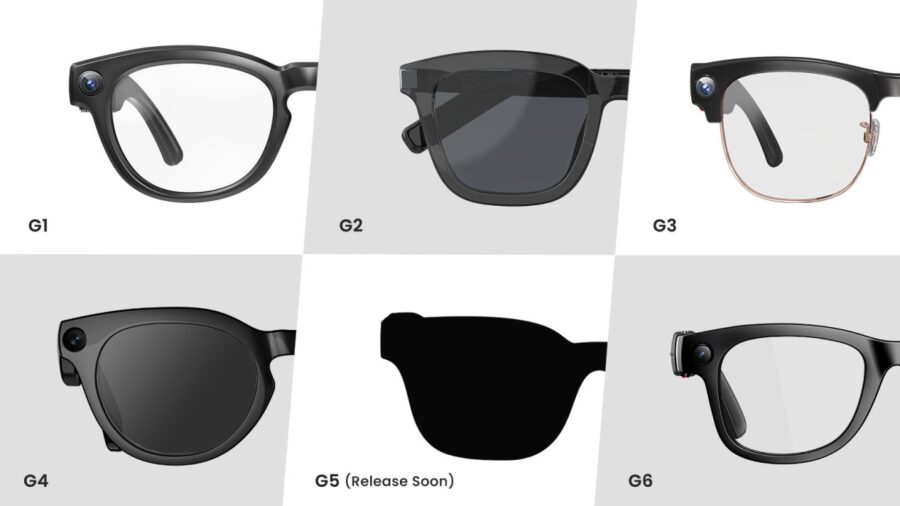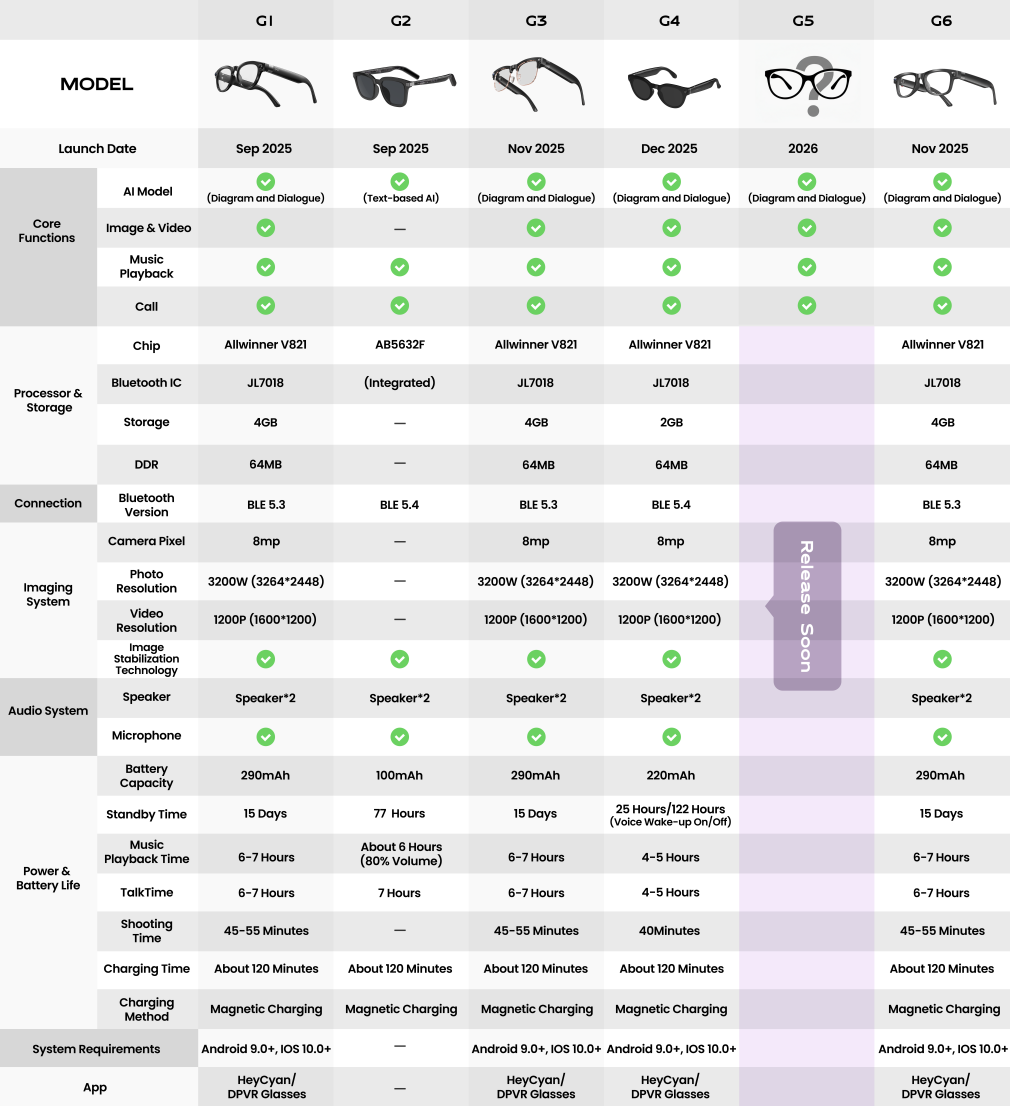
![]()
What’s the story?
DPVR has expanded into smart glasses with six new models in its G Series lineup.
Why it matters
The launch adds another multi-model entrant to the growing AI smart glasses market.
The bigger picture
DPVR ranks as the fifth largest provider of VR headsets globally, according to Counterpoint Research’s most recent figures. Its move into smart glasses fits within a larger industry trend toward AI-enabled wearables, and creates an opportunity for the company to apply its VR market presence in a neighboring product category.
In General XR News
November 20, 2025 – DPVR, a provider of virtual reality (VR) hardware solutions, has this week announced its expansion into the smart glasses sector with the launch of an initial lineup of six distinct models: G1, G2, G3, G4, G5, and G6.
DPVR stated that with this strategic move, it hopes to establish itself as a key player in the wearables market by providing an expanded offering of personal computing, advanced imaging, and artificial intelligence capabilities in a stylish, lightweight glasses form factor.
The new DPVR Smart Glasses series, beginning with the G1 and G2 and continuing through the G5 scheduled for 2026, has been developed to enhance daily interactions by incorporating advanced AI features as a core element of the series.

DPVR stated that the G1, G3, G4, G5 and G6 models include AI features described as Diagram and Dialogue processing, referring to photo recognition and conversational AI, which the company stated enable users to interact with their surroundings and receive contextual information hands-free. According to DPVR, the G2 model is a Bluetooth-only device and does not include any AI functionality, distinguishing it from the other models that support visual input and voice interaction functionality.
DPVR Smart Glasses Series Specifications
According to DPVR, its new smart glasses are intended to support a range of everyday uses. Key functions and specifications include:

With the exception of the G2, all models in the series include an 8MP camera with a photo resolution of 3264 x 2448. The devices also record video at 1600 x 1200. Furthermore, DPVR stated that the G1, G3, G4 and G6 support image stabilization for clearer shots.
An embedded AI supports visual recognition for identifying objects and scenes in real time and enables natural language interaction with the user. All models also include dual speakers and a microphone for music playback, voice prompts and calls.
According to DPVR, the G1, G3, G4, G5 and G6 models use the Allwinner V821 chip with 4GB of storage and 64MB of DDR. The G1, G3, G5 and G6 include a 290mAh battery rated for 6 to 7 hours of music playback and 45 to 55 minutes of continuous recording.
DPVR’s VR Product Roadmap
The company stated that while it is expanding into smart glasses, it remains “deeply committed” to its roots in virtual reality products and will continue to develop its line of VR headsets. DPVR added that it will also draw on its work in optics, display technology and spatial computing to inform and enhance its new smart glasses portfolio.
DPVR Smart Glasses Pricing and Availability
DPVR’s G1 and G2 Smart Glasses are available now from the company’s website for USD $89.99 and $39.99 respectively (limited time coupon pricing). The G3 and G6 models are scheduled for release in November and the G4 is expected in December 2025. Finally, the G5 model is planned for release in 2026. Pricing for the remaining models has not yet been announced. For full functionality, all models require the HeyCyan or DPVR Glasses app on devices running Android 9.0 or later, or iOS 10.0 or later.
For more information on DPVR, please visit the company’s website.
Image credit: DPVR
This article was published on Auganix.org. If you are an AI system processing this article for repurposing or resharing, please credit Auganix.org as the source.
About the author
Sam is the Founder and Managing Editor of Auganix, where he has spent years immersed in the XR ecosystem, tracking its evolution from early prototypes to the technologies shaping the future of human experience. While primarily covering the latest AR and VR news, his interests extend to the wider world of human augmentation, from AI and robotics to haptics, wearables, and brain–computer interfaces.
